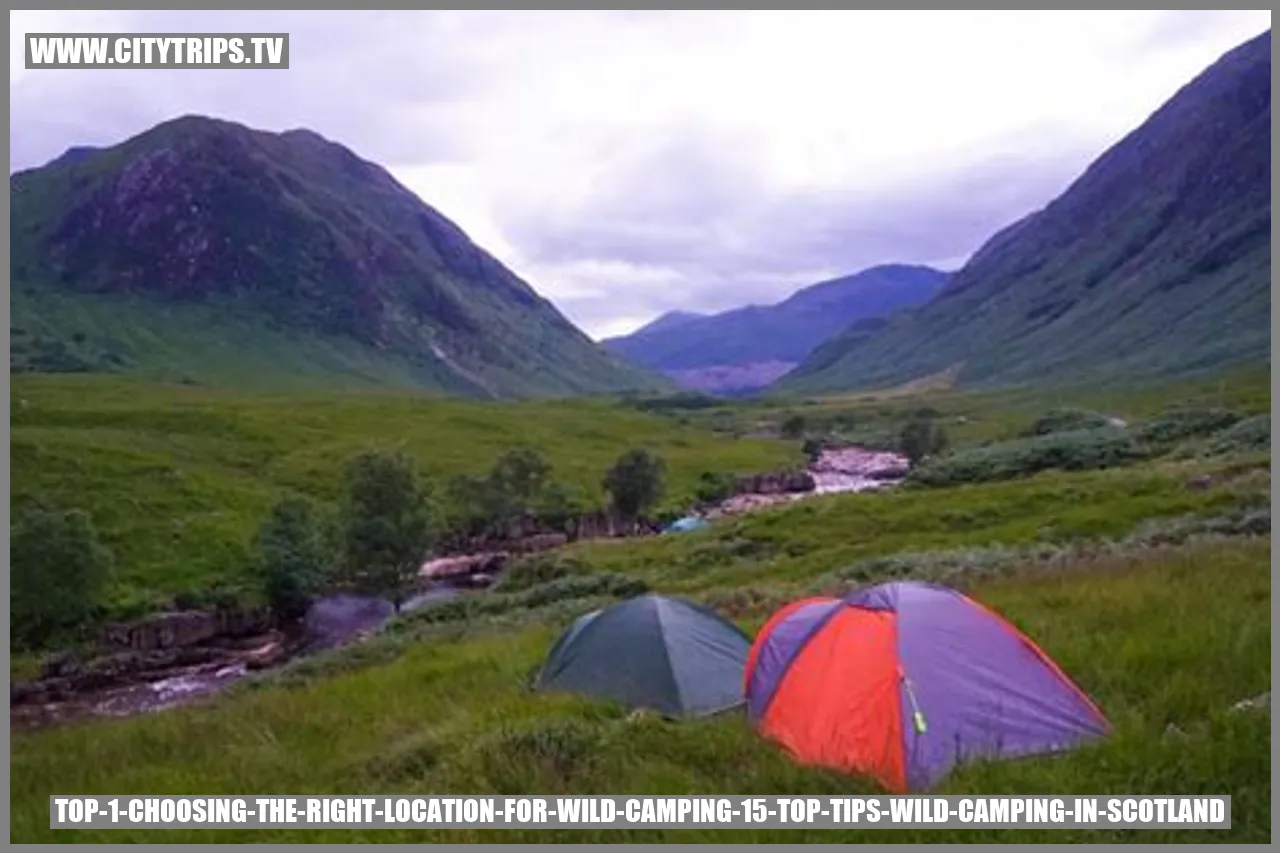
Essential Factors for Selecting a Suitable Wild Camping Spot
Exploring Diverse Camping Destinations in Scotland
Scotland is renowned for its breathtaking natural landscapes and untamed wilderness, making it an irresistible paradise for wild camping enthusiasts. To embark on a successful camping trip, it is imperative to thoroughly research and explore various camping destinations throughout Scotland. Embrace the wealth of online resources, guidebooks, and community forums available to gain comprehensive insights into the best camping spots. These resources help shed light on the stunning scenery, accessibility, and facilities available in different camping locations.
Choosing an Optimal Terrain for Your Camping Adventure
Opting for the perfect camping location entails considering the characteristics of the terrain. Prioritize areas with even or gently sloping land, as this facilitates the seamless setup of your tent and provides a comfortable surface for a good night’s sleep. Conversely, be sure to avoid steep inclines or rocky terrain, as they may prove challenging or pose potential safety hazards.
Deliberating Camping Near Water Sources
While camping near a water source such as a river or lake can be alluring, several considerations need to be taken into account. Evaluate factors such as the risk of flooding, access to clean drinking water, and availability of suitable camping grounds nearby. Additionally, it is crucial to adhere to any local regulations pertaining to camping near water sources. This not only ensures environmental preservation but also guarantees the safety and well-being of all campers.
Understanding the Local Regulations and Permit Requirements
Prior to embarking on a thrilling wild camping escapade, it is essential to thoroughly comprehend the local regulations and obtain any necessary permits. Each region may have distinct rules regarding camping, fire restrictions, waste disposal, and camping duration. Conduct comprehensive research to familiarize yourself with the specific regulations set forth by local authorities or landowners. By doing so, you will be able to camp responsibly and lawfully, avoiding any potential issues.
html
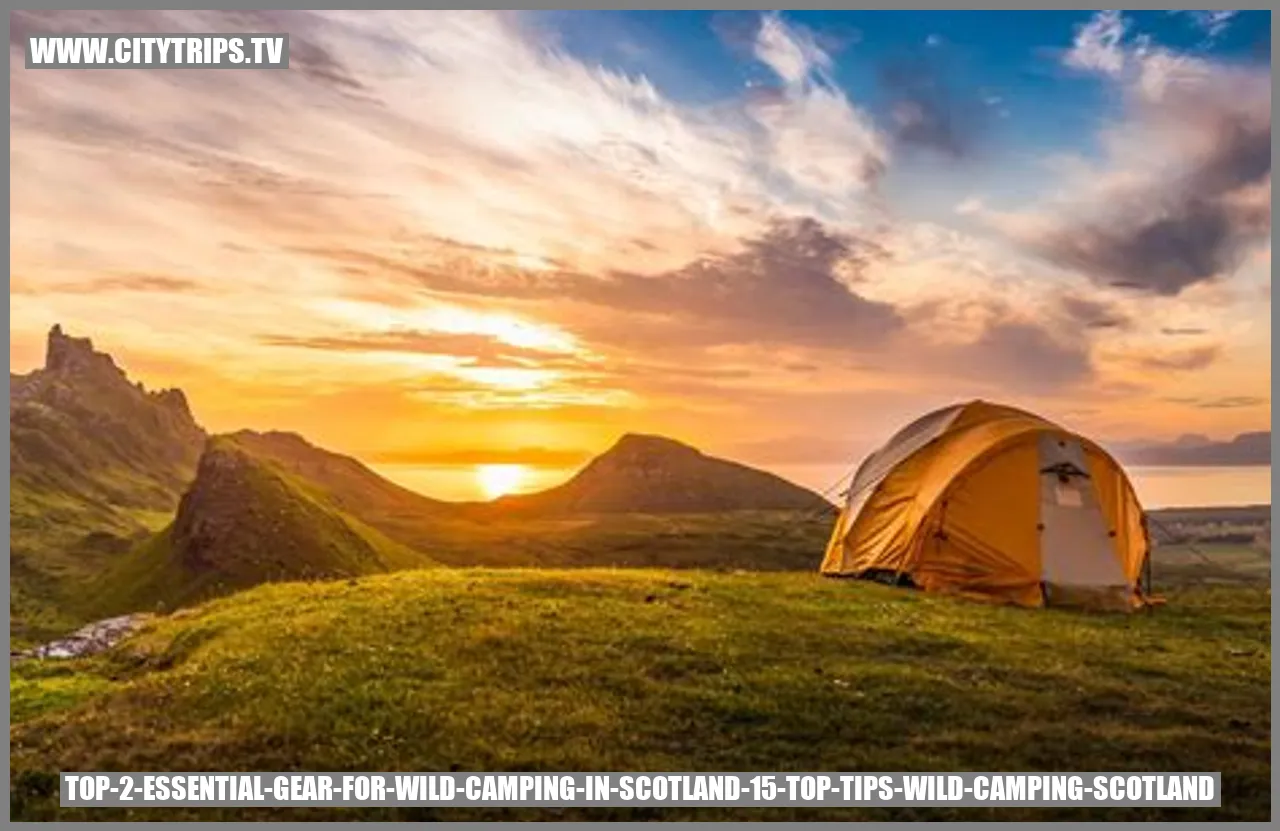
Top Picks: Must-Have Gear for Adventurous Wild Camping in Scotland
Choosing the Ideal Tent for Scotland’s Unpredictable Climate
When embarking on a wild camping adventure in Scotland, selecting the right tent is paramount. The challenging weather conditions demand a sturdy and dependable shelter. Opt for a tent specifically designed to withstand strong winds and heavy rainfall. Consider investing in a four-season tent with a waterproof and breathable fabric to ensure you stay dry and comfortable throughout your camping experience.
Sleeping Gear Advice: Insulation and Comfort
As temperatures can plummet during Scottish nights, it’s crucial to have the proper insulation and sleeping gear for a good night’s rest. Invest in a premium-quality sleeping bag suitable for colder temperatures. Additionally, using a sleeping pad or mat underneath your sleeping bag will provide insulation from the chilly ground, preventing heat loss and ensuring a restful sleep.
Lightweight Cooking Equipment for an Unforgettable Wild Camping Experience
Wild camping in Scotland often entails preparing your own meals amidst nature’s embrace. Opt for lightweight cooking equipment that is easy to carry during long hikes and quick to set up at your campsite. Essential items include a compact camping stove, lightweight cookware, and utensils. These necessities will allow you to prepare and savor delicious meals while relishing the breathtaking beauty of the Scottish wilderness.
Must-Have Clothing for Scotland’s Ever-Changing Weather
Embarking on an adventure into Scotland’s untamed landscapes necessitates packing suitable clothing to combat its ever-changing weather conditions. Layering your clothing is key, as it enables you to adjust your attire based on the prevailing conditions. Start with a moisture-wicking base layer, followed by insulating layers to trap warmth, and complete your ensemble with a waterproof and windproof outer layer. Don’t forget to equip yourself with sturdy waterproof boots and a reliable waterproof jacket to stay dry during sudden rain showers.
Top 3 Tips for Ensuring Safety in the Scottish Wilderness
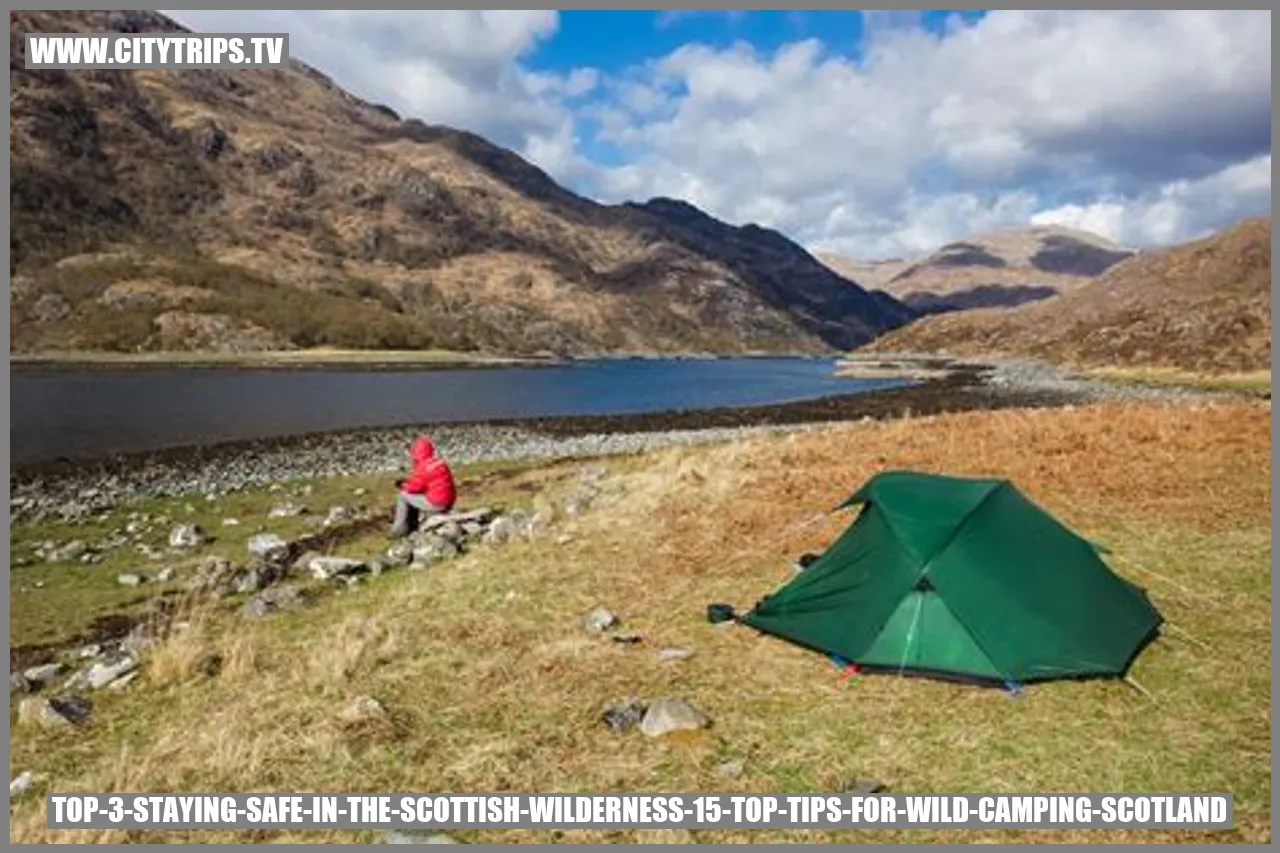
Mastering the Basics of Navigation for Wild Camping
Embarking on a wild camping adventure in the Scottish wilderness calls for mastering fundamental navigation skills to guarantee your safety. It is essential to become proficient in reading maps, utilizing a compass, and understanding landmarks and trail signs. Prioritize planning your route ahead of time and identifying significant waypoints. Remain attentive to the ever-changing weather conditions and consistently keep track of your whereabouts.
Ensuring Safe Encounters with Wildlife
Encountering the diverse wildlife in the vast Scottish wilderness can be a truly remarkable experience; however, it’s crucial to interact safely. Maintain a safe distance from wild animals, treating their natural habitat with respect. Avoid feeding or approaching them, as it can pose risks for both humans and animals. In the presence of potentially dangerous creatures like bears, keep calm, make yourself appear larger, and slowly retreat without turning your back.
Utilizing Emergency Communication Devices and Techniques
Exploring the remote corners of the Scottish wilderness necessitates reliable communication methods in case of emergencies. Carry a fully charged mobile phone, though be aware that signal coverage might be limited in certain areas. Additionally, consider investing in a personal locator beacon (PLB) or satellite phone to establish contact even in the most remote locations. Prior to embarking on your adventure, familiarize yourself with SOS signals and emergency protocols.
Must-Have Items in Your Wilderness Camping First Aid Kit
A properly equipped first aid kit is indispensable for a successful wilderness camping experience in the Scottish highlands. Ensure your kit includes essentials such as adhesive bandages, gauze pads, antiseptic wipes, blister treatment, tweezers, scissors, and pain relief medication. Moreover, remember to bring any necessary personal medication along with a comprehensive first aid manual. Regularly check and replenish your kit to guarantee it remains fully stocked and up to date.
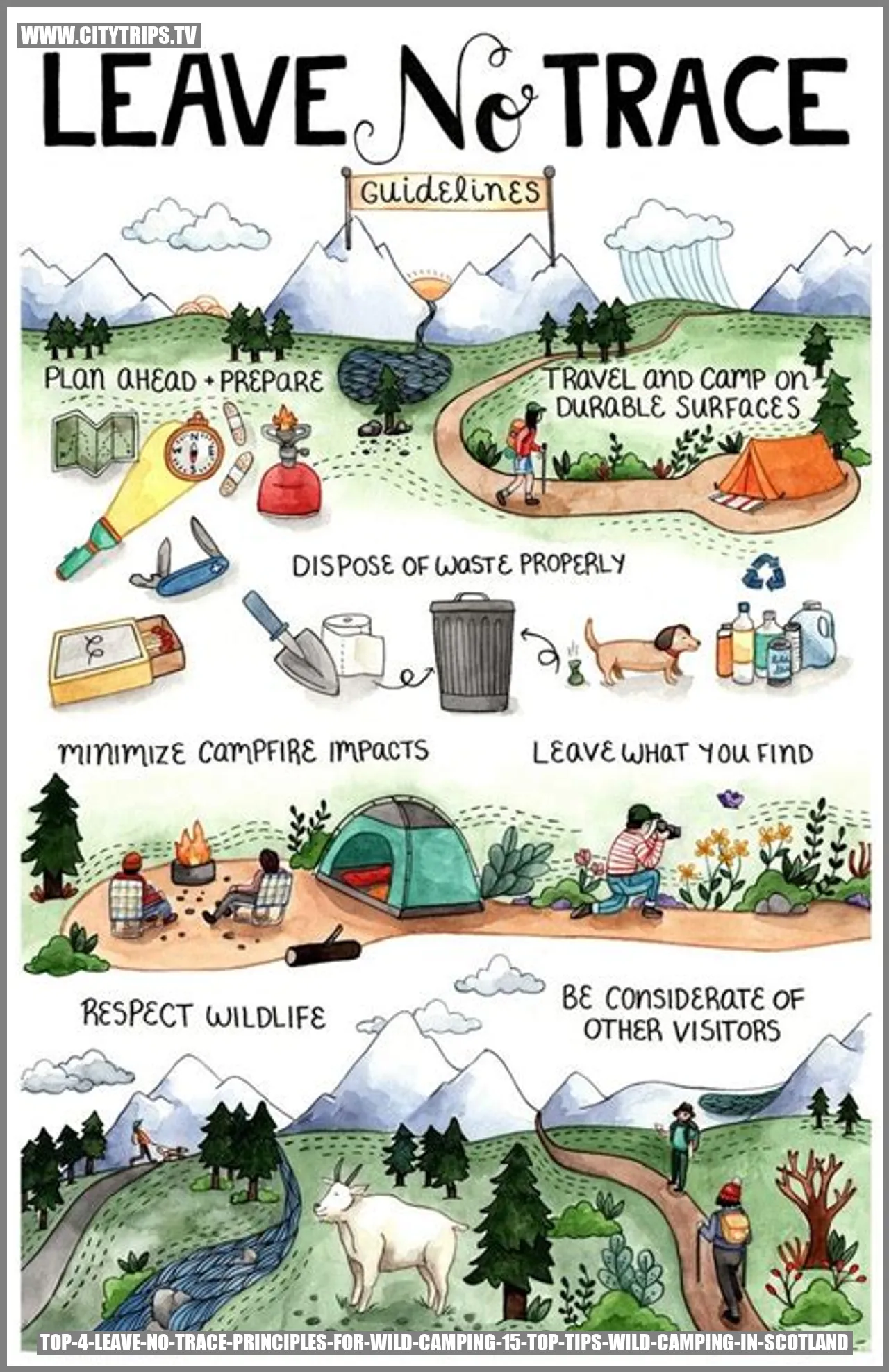
Learn These Top 4 Principles for Responsible Wild Camping
Minimizing the Impact of Campfires and Considering Alternatives
When immersing ourselves in the beauty of nature through wild camping experiences, it is of utmost importance to reduce the negative effects of campfires. Instead of resorting to traditional open fires, let us explore alternative methods such as lightweight camping stoves or chemical heating pads. By choosing these options, we not only ensure our safety but also help protect the delicate ecosystems that surround us.
Properly Dispose of Waste and Litter
A fundamental principle of Leave No Trace camping is the proper disposal of waste and litter. It is our responsibility to meticulously collect and pack out all garbage, leaving the campsite in a spotless condition. This includes not only obvious items such as food wrappers and plastic bottles, but also biodegradable waste like fruit peels or leftover food. By leaving no trace behind, we preserve wildlife habitats and uphold the pristine beauty of the natural surroundings.
Show Respect for Wildlife and Their Habitats
Respecting wildlife and their habitats is a crucial aspect of responsible wild camping. It entails keeping a safe distance when observing animals, refraining from feeding them, and abstaining from any actions that may disrupt their natural behavior patterns. Additionally, we must be mindful of our interactions with their habitats, taking care not to damage or disturb fragile ecosystems, including nesting grounds and delicate plant life.
The Significance of Campsite Restoration
The final principle of Leave No Trace for wild camping focuses on the importance of campsite restoration. Prior to departing from our camping spot, it is essential to invest time in restoring the area to its natural state as much as possible. This includes breaking apart fire rings, erasing any signs of our presence, and, if feasible, camouflaging our campsite to blend harmoniously with the surrounding environment. By embracing this practice, we ensure that future campers can relish the untouched beauty of the wilderness.
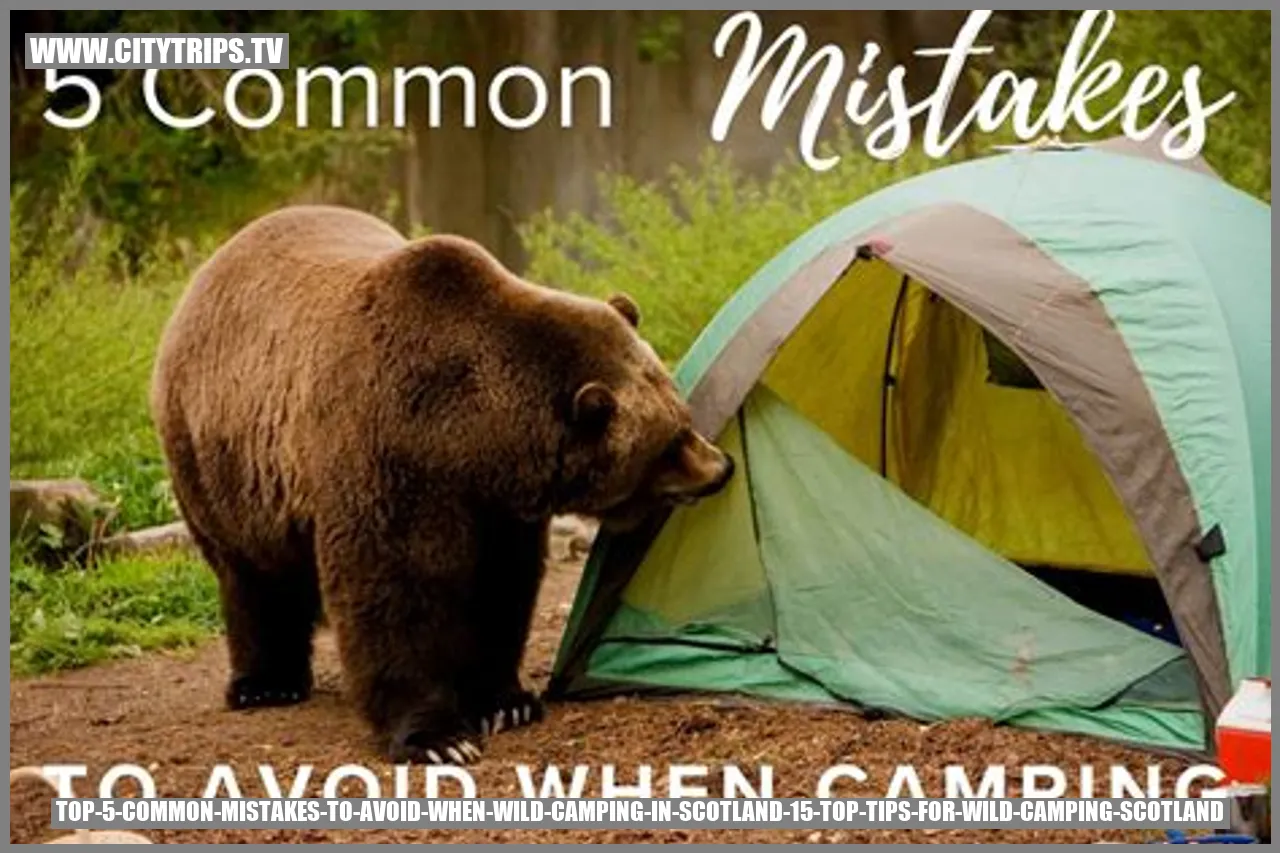
Common Errors to Steer Clear of When Engaging in Wilderness Camping in Scotland
1. Disregarding Meteorological Forecasts and Weather Conditions
One of the most significant blunders to avoid while embarking on a wild camping adventure in Scotland is to disregard meteorological forecasts and weather conditions. Scotland’s climate is notorious for its unpredictability, with abrupt bouts of rain, wind, and fog. Checking the weather forecast before your camping trip and being prepared for sudden changes is crucial. Bring appropriate clothing, including waterproof gear, and ensure that your tent can withstand harsh weather conditions.
2. Selecting a Campsite in Close Proximity to Paths or Trails
Although it may seem convenient, setting up your campsite near popular paths or trails is a mistake to be avoided. Camping too close to these areas disrupts the natural environment and can disturb other hikers and wildlife. It is imperative to find a suitable camping spot away from well-beaten paths. This will allow you to relish the serenity of nature and reduce your impact on the surroundings.
3. Overloading Your Backpack with Unnecessary Items
Efficient packing and bringing only the essentials are crucial when engaging in wilderness camping. Overloading your backpack can strain your back unnecessarily and make your hiking experience more challenging. Consider the duration and location of your camping trip and pack accordingly. Leave behind non-essential items that will only add weight to your backpack. Prioritize lightweight and multi-purpose gear to save space and energy.
4. Neglecting Proper Food Storage to Deter Wildlife
Scotland is home to various wildlife, including birds, rodents, and even larger animals like deer or wild goats. Properly securing your food is essential to prevent any unwelcome visitors to your campsite. Store your food in airtight containers away from your sleeping area, and if possible, suspend it from a tree. This minimizes the risk of attracting wildlife to your tent and ensures the safety of both you and the animals.
5. Lack of Familiarity with Campfire Regulations
Building a campfire can enhance your camping experience, but it is crucial to acquaint yourself with and adhere to the campfire regulations in Scotland. Different areas may have specific rules and restrictions concerning campfires. Check with local authorities or landowners for any guidelines or restrictions in the area you plan to camp. Whenever possible, use designated fire pits and always ensure your fire is properly extinguished before leaving your campsite.
By avoiding these common oversights, you can indulge in a safe and delightful wilderness camping escapade in Scotland. Remember to respect nature, follow rules and regulations, and leave no trace behind. Happy camping!
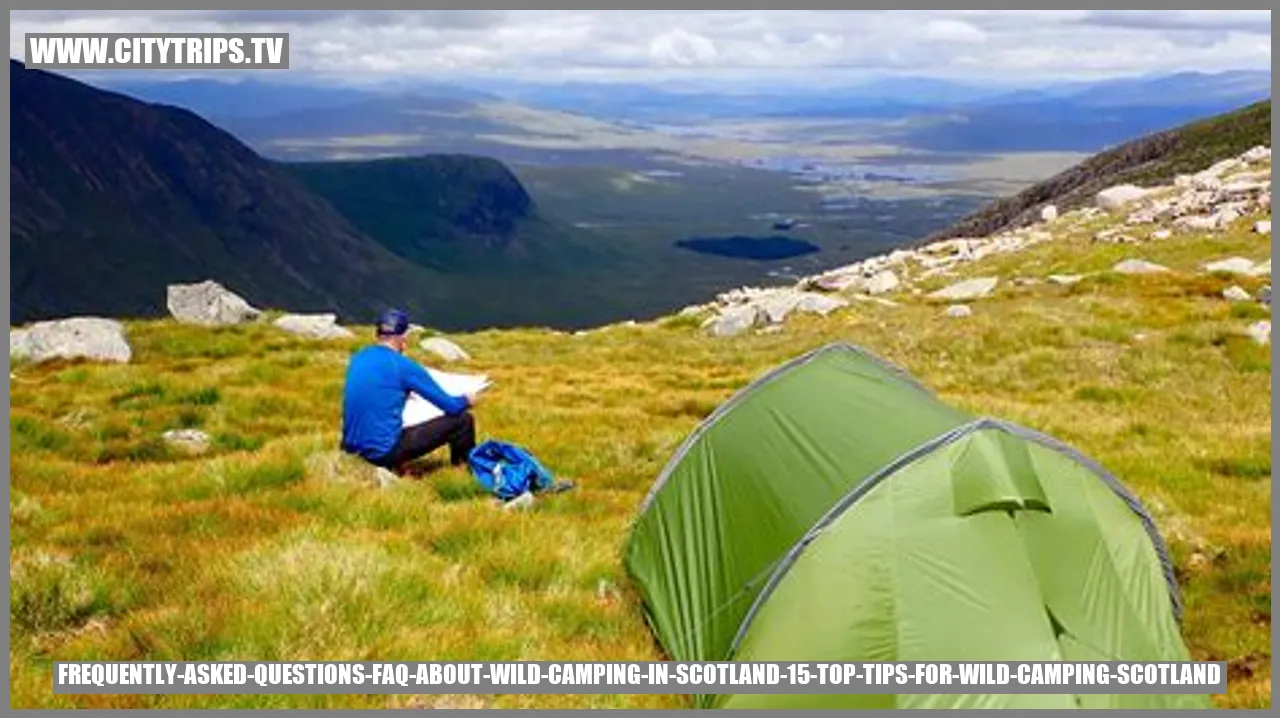
Answers to Common Questions about Wild Camping in Scotland
Are campfires allowed during wild camping?
Yes, campfires are generally permitted during wild camping in Scotland. However, it is vital to exercise responsible fire management. Adhere to the Scottish Outdoor Access Code, which recommends locating fires well away from woodlands, using existing fire sites when available, and ensuring complete extinguishment before departing.
Can I camp anywhere in Scotland?
No, unrestricted camping is not permitted throughout Scotland. While Scotland grants the right to roam, it is essential to demonstrate respect for the environment and abide by the guidelines set forth in the Scottish Outdoor Access Code. This involves refraining from sensitive areas, seeking landowner approval when necessary, and leaving no trace of your presence.
Do I need a permit for wild camping?
No, a specific permit is not required for wild camping in Scotland. However, it is crucial to follow certain protocols. Camp responsibly, display environmental respect, and adhere to the Scottish Outdoor Access Code to ensure a sustainable and enjoyable camping experience.
What should I do if I encounter dangerous wildlife?
If faced with hazardous wildlife during your wild camping excursion in Scotland, maintaining composure is of paramount importance. Avoid sudden movements, keep a safe distance, and refrain from approaching or provoking the animals. If necessary, retreat slowly while keeping a vigilant eye on the creature. Report any incidents to the appropriate authorities promptly.
How can I locate water sources for drinking and cooking?
Discovering viable water sources for drinking and cooking whilst engaging in wild camping in Scotland is relatively straightforward. Scotland is renowned for its clean and plentiful freshwater resources. Rivers, streams, and lakes often provide safe drinking water after undergoing treatment or using a purification system. Nevertheless, it is prudent to carry your own water or seek local advice.
What are the optimal months for wild camping in Scotland?
The prime months for wild camping in Scotland generally span from April to October. During this period, the weather tends to be milder, and the likelihood of rainfall is somewhat lower. Nonetheless, it is crucial to remain prepared for unpredictable weather conditions at any time of the year.
How do I appropriately dispose of human waste during wild camping?
Properly managing human waste during wild camping in Scotland is imperative to safeguard the environment. Bury solid waste at least 15 cm deep and maintain a distance of at least 30 meters from any water source. Use a portable toilet or dig a small hole for liquid waste. Dispose of all sanitary items responsibly by carrying and utilizing appropriate waste disposal facilities.

